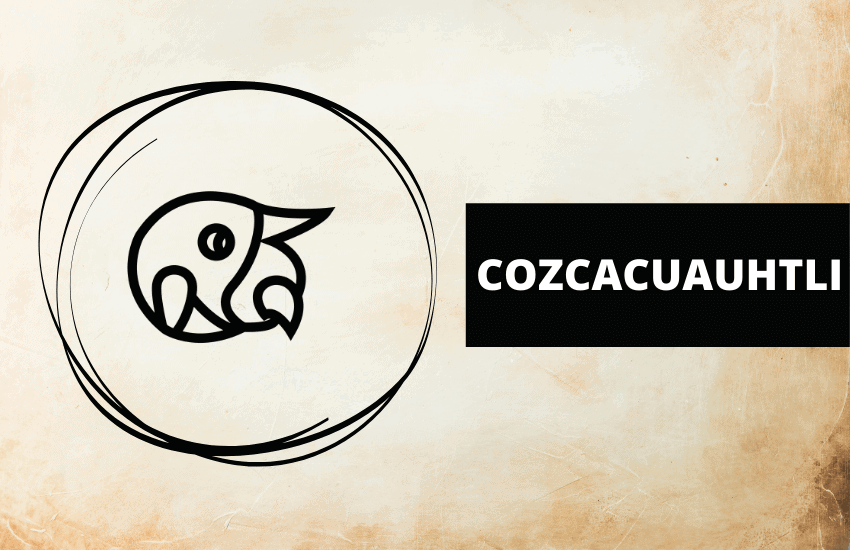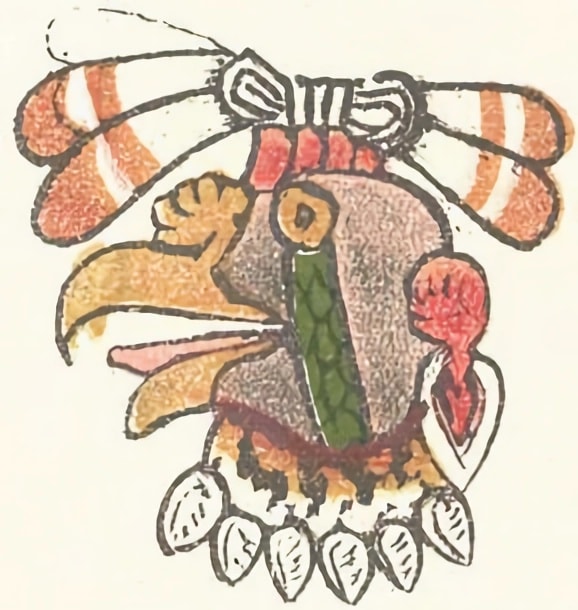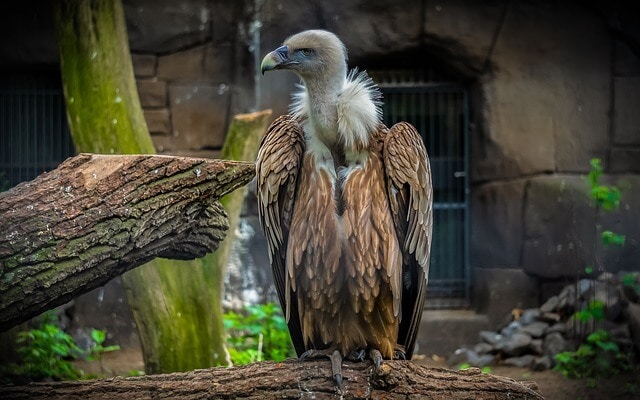
Table of Contents
Cozcacuauhtli is an auspicious day of the 16th trecena in the sacred Aztec calendar. Associated with the butterfly goddess Itzpapalotl, it’s regarded as a positive day to confront one’s life problems and besting the deceitful.
What is Cozcacuauhtli?

Cozcacuauhtli, meaning ‘vulture’, was the first day of the 16th trecena, represented by the glyph of a vulture’s head. This day, known as Cib in Maya, signifies long life, good counsel, mental equilibrium, and wisdom.
It was a good day to face one’s problems in life, including disruptions, failures, deaths, and discontinuities. The Aztecs also regarded it as an excellent day for tricking those who were deceitful.
The Aztecs organized their lives around two important calendars: the tonalpohualli and the xiuhpohualli. While the xiuhpohualli was a 365-day calendar used for agricultural purposes. the tonalpohualli was used for various religious rituals. It consisted of 260 days, divided into 20 trecenas, or units,which were 13-day periods. Each day had a symbol to represent it and was ruled by a specific deity.
Vultures in Mesoamerican Culture

Vultures were respected birds in Aztec culture, often depicted on the headdresses of various deities as well as on ceramic vessels. Vultures in Aztec culture, primarily scavengers, were respected and often depicted in art. While primarily associated with carrion, their symbolism extended to concepts of purification and the cycle of life and death.
In ancient Mesoamerica, the vulture was associated with impurity and diseases as well as caves that were entrances to the underworld. Some believed that the vulture gained its power from the sun which also meant that the bird had power over the sun, and played a role in helping it to rise.
Governing Deities of Cozcacuauhtli
The day Cozcacuauhtli was governed by the Mesoamerican deity Itzpapalotl, as well as Xolotl, the god of lightning and fire. They were responsible for providing the day with its tonalli (life energy).
1. Itzpapalotl
Itzpapalotl was the skeletal warrior goddess who presided over Tamoanchan, the paradise for infant mortality victims and the place where humans were believed to have been created. Also known as the ‘Butterfly Goddess’, she was often depicted in the form of a beautiful Obsidian Butterfly or with eagle attributes.
According to some sources, Itzpapalotl was said to be a young, seductive woman. However, in in others, she’s said to be a horrifying goddess with butterfly wings made of stone blades, and a large, skeletal head. Although she was described as a terrifying deity, she was the protector of midwives and women in labor. She also represents rejuvenation or purification through sacrifice.
Itzpapalotl was one of the ‘Tzitzimime’, the monstrous star demons who came down to the earth and possessed men. It was believed that if the Tzitzimime couldn’t start a fire in the hollowed-out chest cavity of a human at the end of a calendar round, the fifth sun would come to an end, and with it the end of the world.
2. Xolotl
Xolotl was the sinister Mesoamerican god of monstrosities who played an important role in Aztec mythology by protecting the sun from the dangers of the land of the dead. Some sources state that it was Xolotl who accompanied the Feathered-Serpent deity Quetzelcoatl on his journey to the underworld in search of bones that he needed to create new life.
In Mesoamerican art, Xolotl was depicted as a skeleton, a monster with strangely-shaped, reversed feet, or a dog-headed figure with empty eye sockets. It’s said that he lost his eyes by crying until they fell out of their sockets as he was ashamed for refusing to sacrifice himself for the newly created sun.
Cozcacuauhtli in the Aztec Zodiac
The Aztec zodiac used various animals and everyday items as part of its iconography. According to the zodiac, those born on the day of the vulture are strong, energetic, and lucid individuals who can overcome the darkness and reach the light. They’re powerful and ambitious people who have great aspirations for life. Due to their intelligence, they also have success, fortune, and material abundance.








